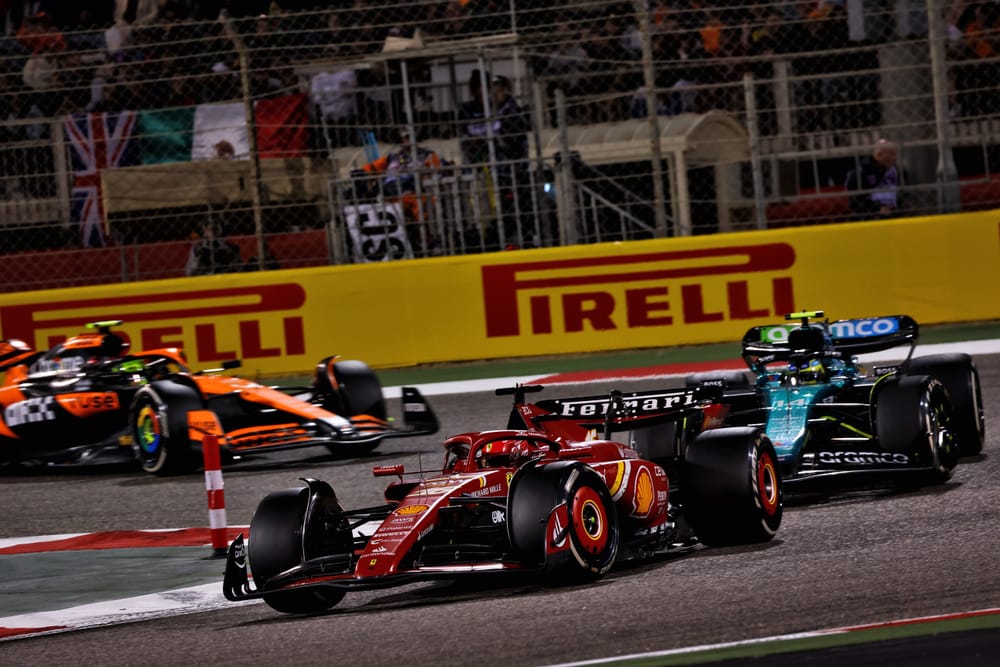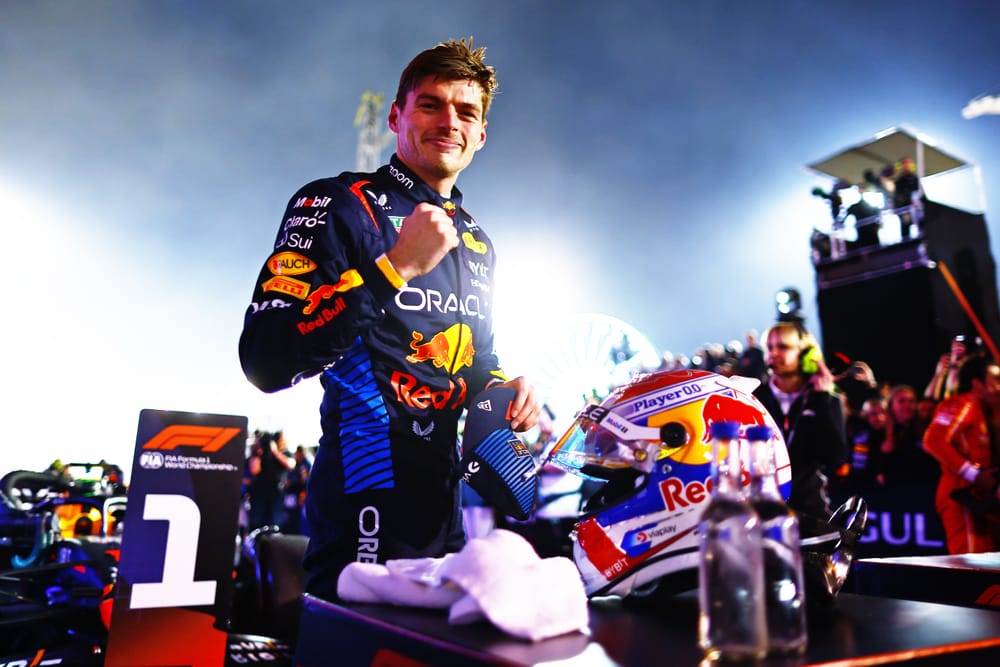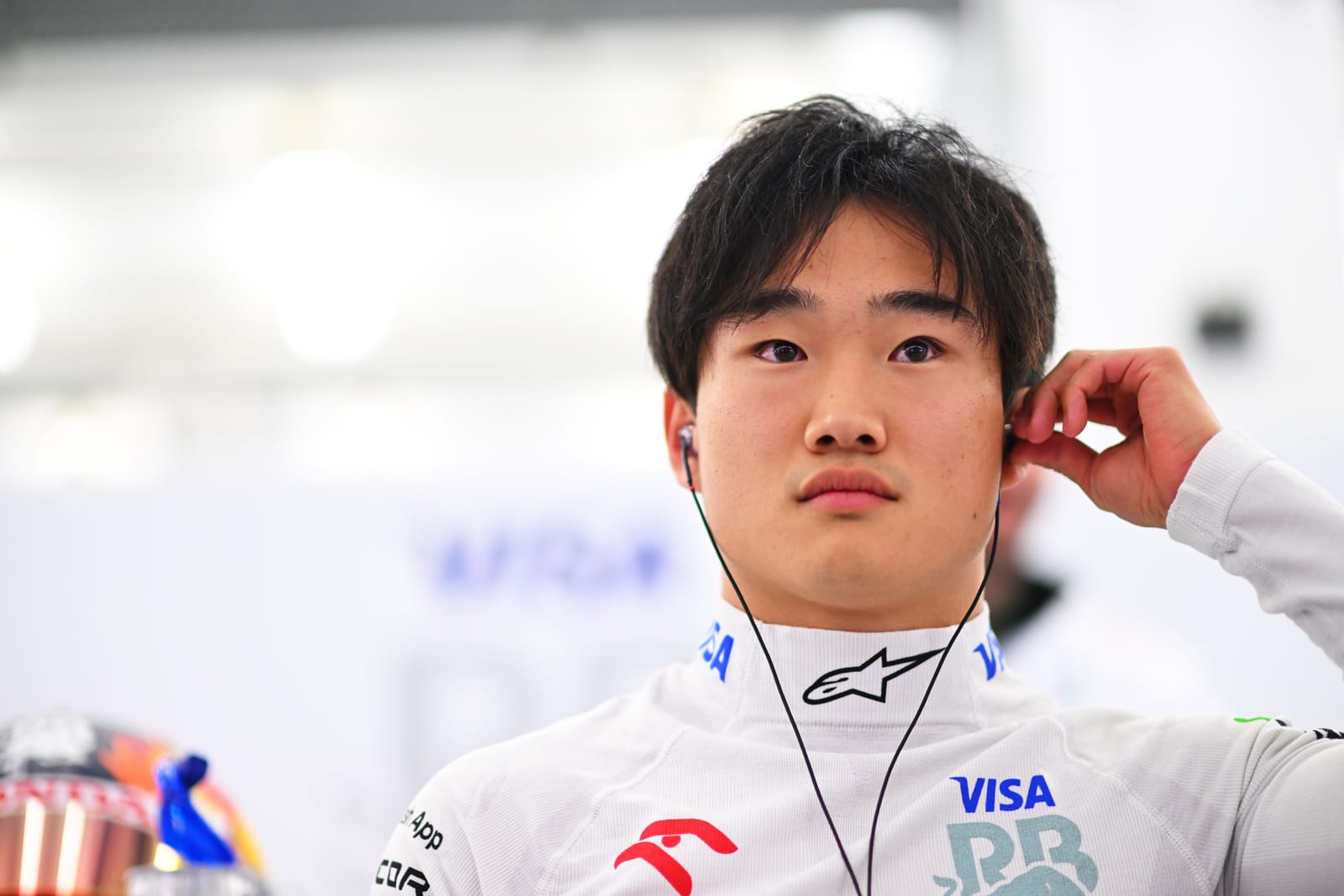Up Next

It was all a bit Formula 1 Groundhog Day at the Bahrain Grand Prix as Max Verstappen led Sergio Perez home about half-a-minute clear of the best non-Red Bull.
Also just like last year, they even used the same soft-hard-soft tyre combination while everyone else was obliged to run soft-hard-hard, thereby only amplifying the difference.
We even had Christian Horner saying it’s a bit too early to form any conclusions about whether this is going to be typical for the season ahead and we really need to get a three or four-race sample. Just as he did here last year.
An understandable natural reaction to that may be, “yeah, right,” but the cynical take is not always the correct one, especially in something as complex as F1. So can we use the shape and circumstances of this race to analyse that question?
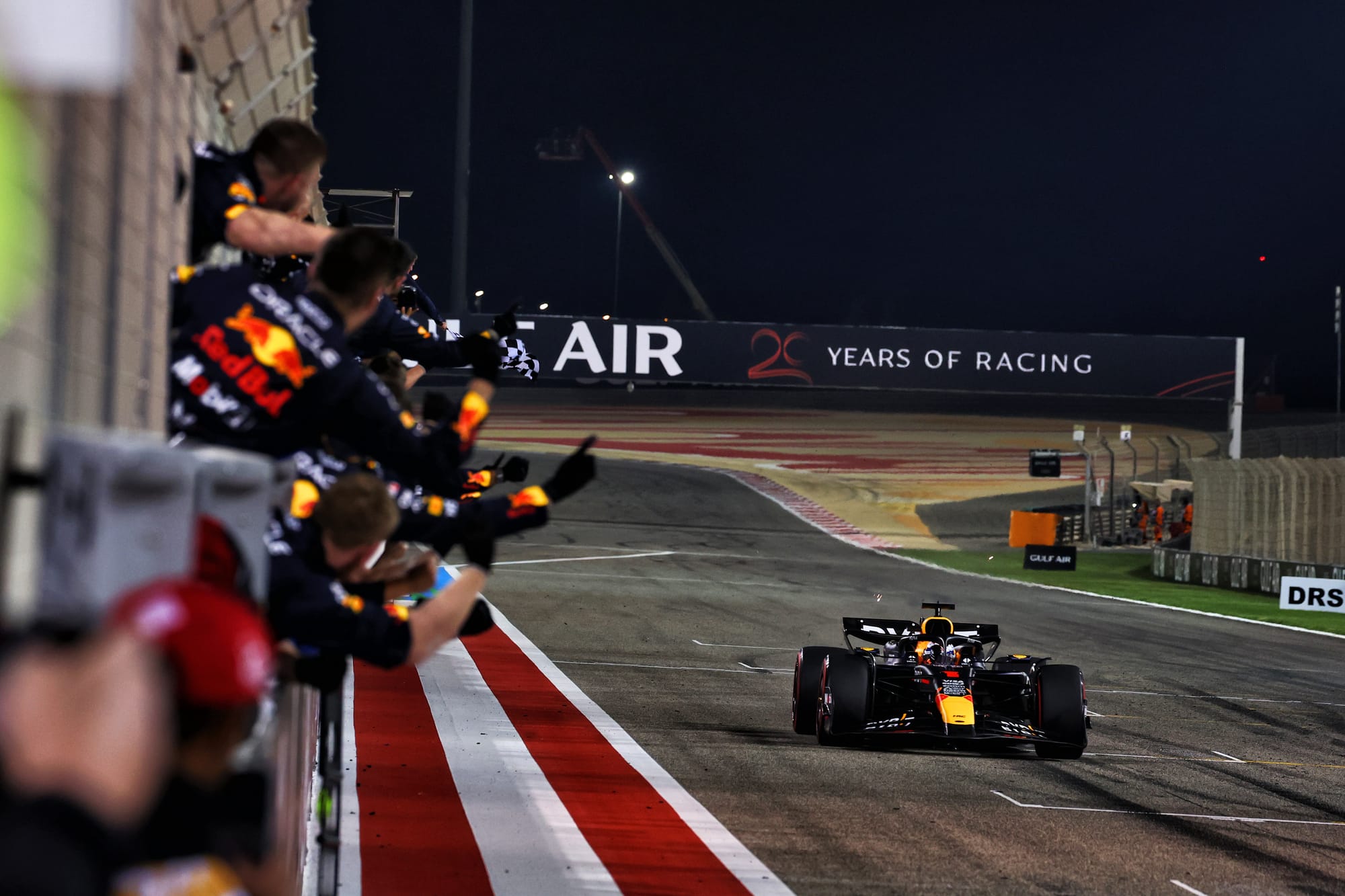
The bald facts are that Verstappen scraped pole with a time that was actually slower than that set by Charles Leclerc’s Ferrari in Q2, but romped home 25s clear of Carlos Sainz’s Ferrari as the best non-Red Bull, an average advantage of around 0.5s per lap.
The pattern of the Red Bull’s race advantage being substantially greater than that of qualifying is very familiar from 2022 and ’23. It’s easier on the tyres, which works against it over a lap, but more than pays back in the race and it’s part of the whole philosophy of this generation of venturi floor Red Bulls, built into their DNA.
But within that pattern the numbers and circumstances of Bahrain do paint a rather more optimistic picture of a closer season. Last year Verstappen’s pole margin was a comfortable 0.3s, his race advantage over the best non-Red Bull ballooning to an average of 0.67s per lap. So on the surface at least, the margin is smaller this year.
But there are a couple of opposing pulls which may be corrupting that comparison.
Firstly, Verstappen believes that the change in wind direction and its reduction in force between qualifying and race day really benefitted his RB20 relative to the others. “It just felt much more nicely balanced,” he reported, “and I think it meant we took a bigger step than the others.”
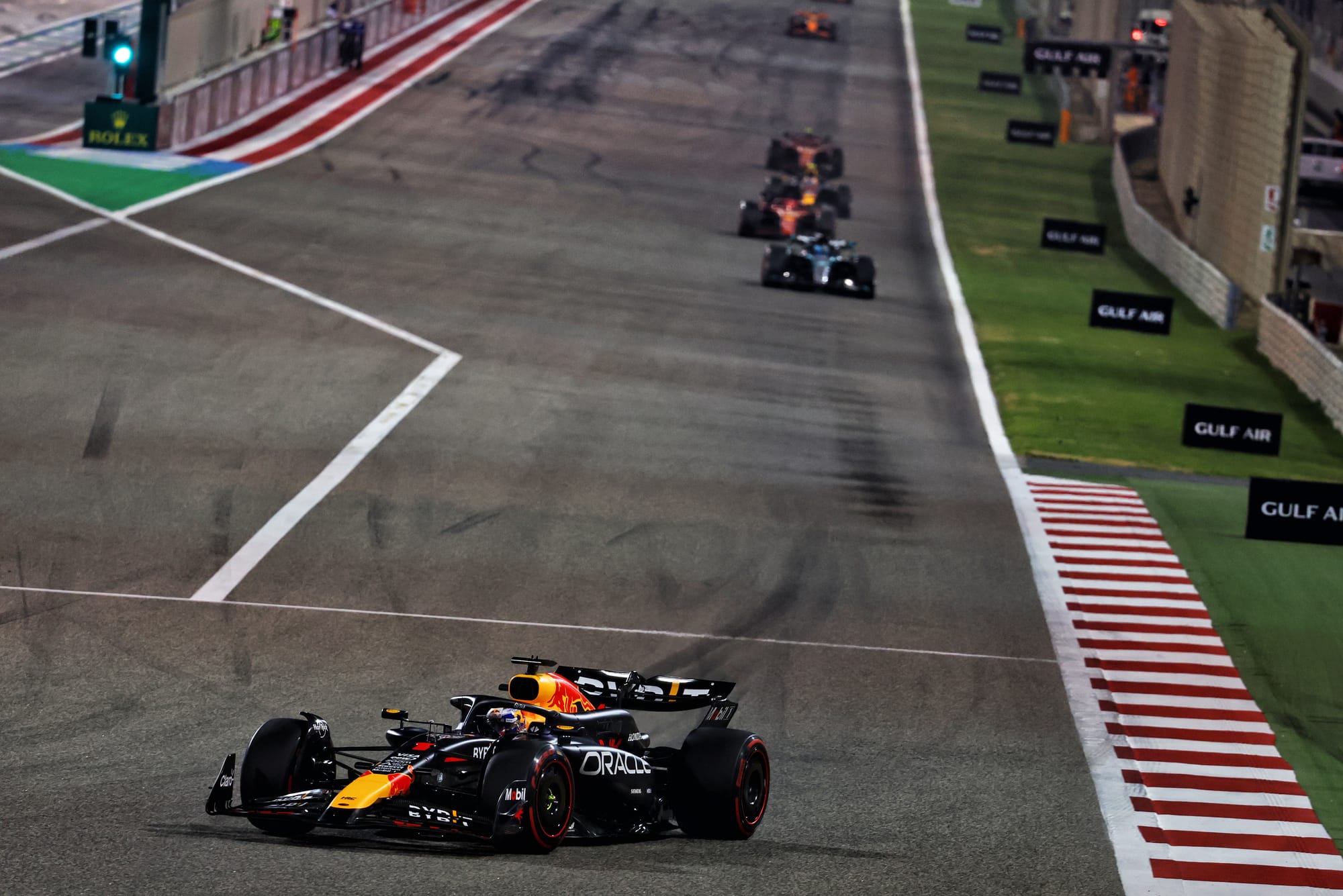
As discussed here yesterday, although the crosswind through Turns 4 and 13 made it difficult for everyone in qualifying, a car with a higher grip level is going to lose more as the crosswind unloads the rear wing. For race day the wind had turned 90-degrees and reduced in its ferocity, making those two crucial corners much less of a problem.
So suggesting that the zero advantage over Leclerc’s Ferrari in qualifying may have represented the Red Bull in the least flattering conditions and that because Bahrain’s crosswind gusts are among the highest we see all season, it will probably have it easier than that in subsequent qualifying sessions.
Could that zero qualifying advantage actually be quite similar to last year’s 0.3s when the trickier wind is factored in?
Secondly, when looking at Verstappen’s race day advantage, the numbers could easily be enormously skewed simply by how hard Max was choosing to try. All he has to do is win the race, after all. There are no extra points for the winning margin. You might recall how last year his engineer Gianpiero Lambiase was imploring him to drive to a set laptime late in the race when on new tyres and how Max responded with radio silence and several laps around 0.7s faster than the requested pace.
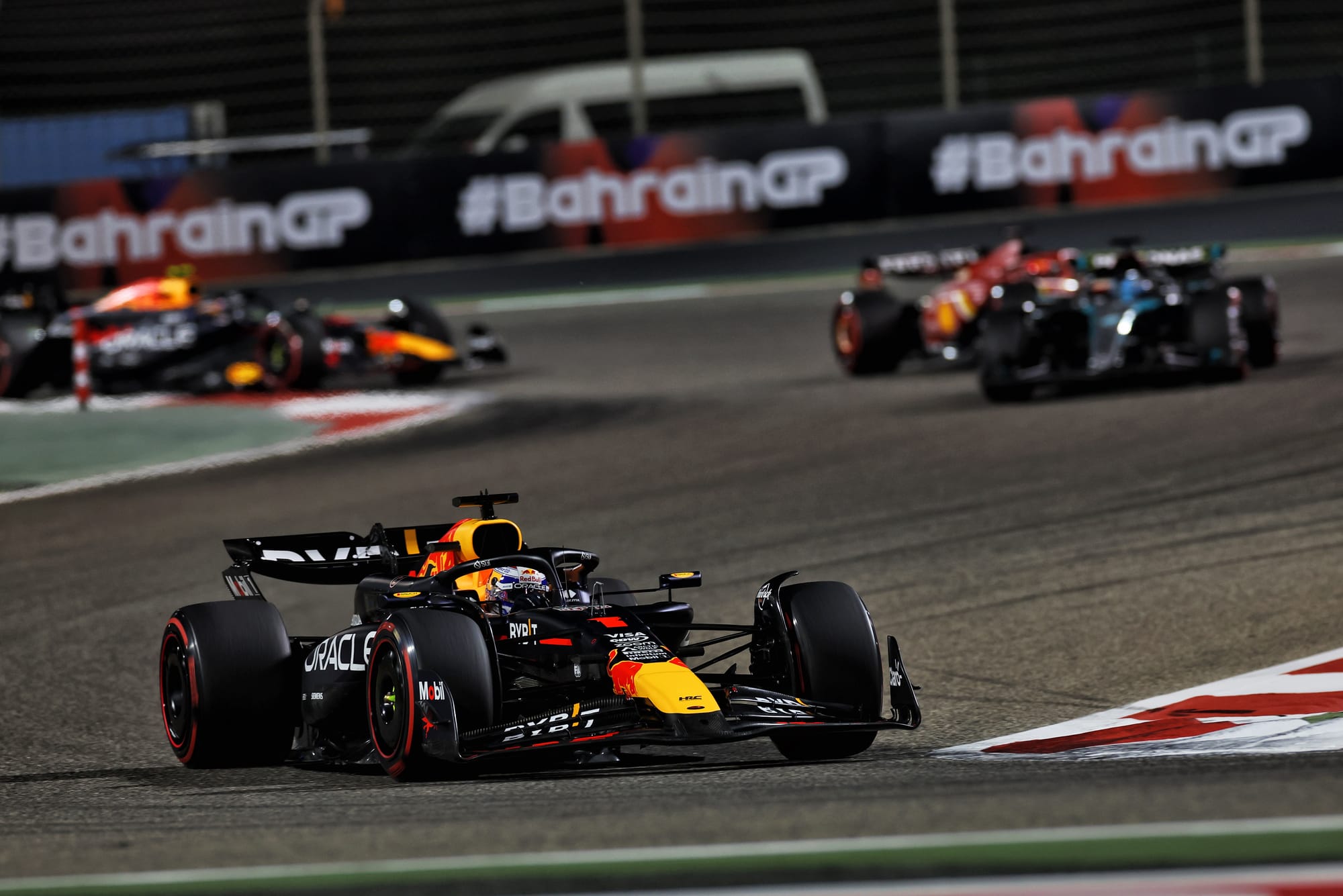
This year, there was none of that. Either Lambiase has chilled out in the knowledge that Verstappen has it all under control – or Verstappen has chilled and decided not to make life so worrying for his engineer, and his tyre temperatures never got to Lambiase-worrying territory. So last year’s 48s lead over the best non-Red Bull compared to this year’s 25s might just be Max giving himself and Lambiase an easier day.
What is beyond speculation is that any performance advantage around Sakhir will be amplified in the race because of the high tyre degradation rate. If you can get yourself out of undercut range and therefore can maximise your stint lengths, you get past an important threshold of being able to do the race using two sets of softs and only one hard, just as Red Bull also did here last year.
If you could stretch out the second stops to say lap 36 or 37 (of the 57-lap race) rather than the early 30s, then you could get onto softs for the final stints rather than another set of hards. That combination was faster, but was only safe if you were not defending from undercuts and so having to pit ahead of schedule. So in that sense, Red Bull’s performance was even exaggerated, especially as it had been the only Q3 team to have kept a set of new softs for the race, in the full expectation of repeating last year’s strategy.
What we can say with certainty is that the Ferrari SF-24 is a significantly better car than its predecessor. “We have a car we can go racing with and not be always looking in the mirrors,” said Sainz after a busy race from an early fifth place to third, passing George Russell’s Mercedes and team-mate Charles Leclerc twice.
Furthermore, both Ferraris were compromised by optimistic sizing of the chosen brake ducts, Leclerc’s much more seriously but presenting problems for Sainz too. “In testing you don’t do 10 laps behind cars in front,” Sainz pointed out, “so we only found the brake problem today. We definitely need to take more margin in the next few races.
“In the first stint and second, I had brake vibrations and the pedal went to go long. I saved them by moving on the track to cool the side that was getting hotter and the vibration improved. Once it all settled I could do my pace.”
It was a pace good enough to keep pressure on Perez’s second place, but no more than that. “When you are in that 2-3s gap you have the worst of it because you are still getting the dirty air which hurts the tyres but you don’t have DRS.” Sainz was so positioned in the hope – but it was no more than that – that the softs on the Red Bull might give his hard tyres an advantage late in the race. But they didn’t.
Perez had driven a solid race, running fourth initially and putting good passes on Russell and Leclerc, just as Sainz would later do. But Russell and Leclerc were actually seriously compromised. Mercedes had gone way too racy with bodywork cooling levels, misjudging how much the temperature would increase from Thursday and Friday.
“For the sake of a few milliseconds in qualifying, we lost around four tenths per lap in the race,” recounted Russell, “as the PU ran too hot, the battery didn’t work properly and we had to do a load of lift and coasting.”
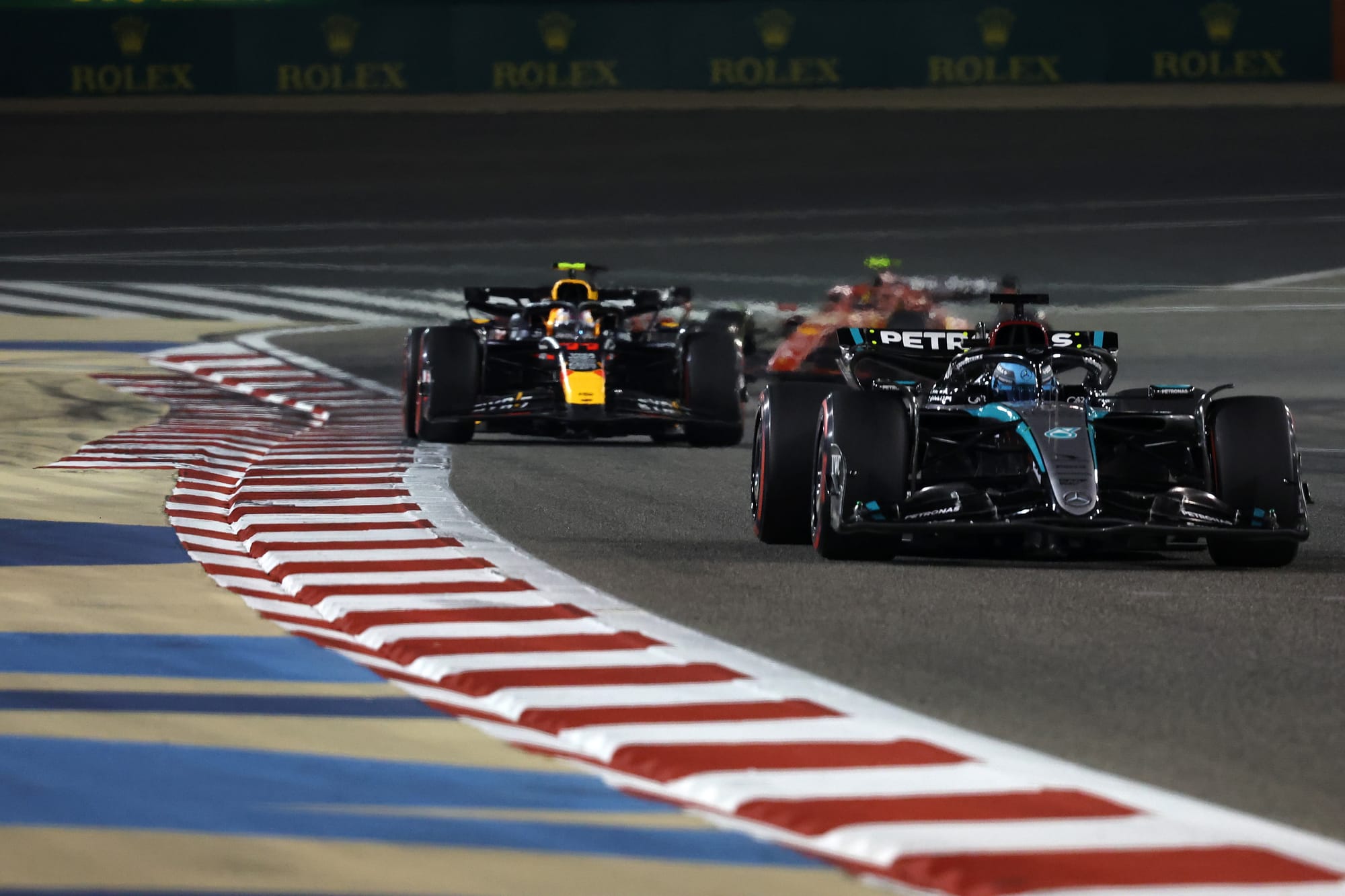
This only became apparent after he had put a lap three pass on Leclerc who was struggling with a Ferrari pulling severely to the right every time he braked and repeatedly locking up the front tyres. “It was getting worse every lap for the first 10 laps then it stabilised, but the problem was there all the time. It was horrible.”
With his team-mate less afflicted, Sainz took advantage of one of those lock-ups to pass, only then for Leclerc to be undercut back ahead, brought in earlier because his tyre degradation was so much greater. So Sainz had to pass him again. It looked close, the sidewalls almost touching at Turn 1, but it was less marginal than it looked, both drivers fully in control.
Close behind fourth and fifth place Leclerc and Russell at the end was Lando Norris’ McLaren. “This track is too tight, too slow and too twisty for our car,” he said, “so I think we can be a lot closer at other places, with faster corners where our car is really strong.”
It was indeed arguably the fastest of all through the fast sweeps of the middle sector here. The McLarens were split by Hamilton, with Mercedes undercutting him past Oscar Piastri for seventh. A long way behind the closely matched Mercs and McLarens came the Aston Martins of Fernando Alonso and Lance Stroll.
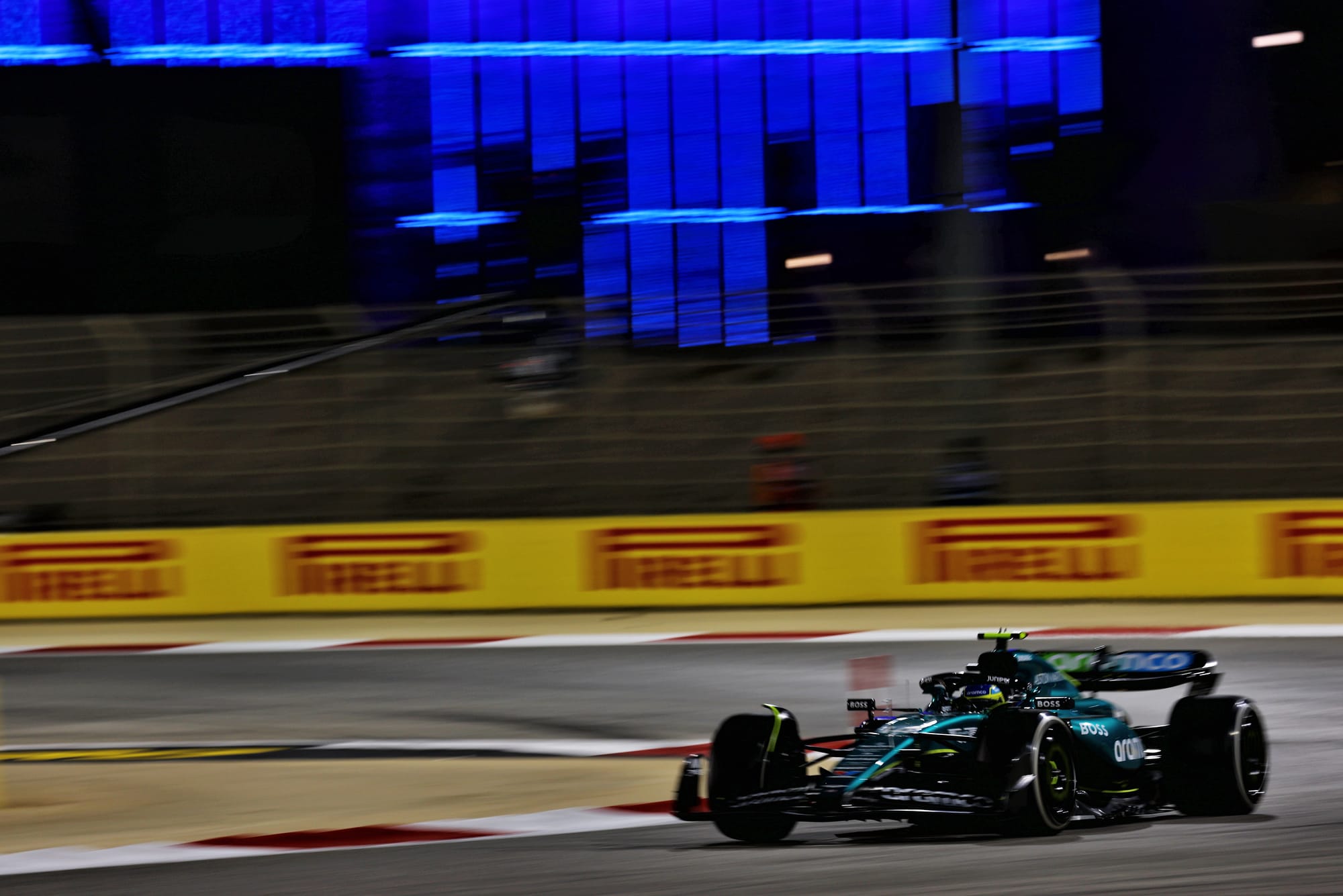
“At some tracks Max is not going to have it this easy,” believes Norris. “I think this track is as good as it will get for Red Bull.”
Sainz echoed Norris’ thoughts. “When we get to better tarmac, hopefully our car will come alive. This is the most rear-limited track of the season and with very high deg. So to come here and do this is good. This car feels like it has a good platform, feels like it’s something we can just keep adding downforce to. But we need to do it quickly…”
It’s only right a competitive racing driver should be optimistic of his prospects. How optimistic should we be for a closer season than last? Perhaps a little.



